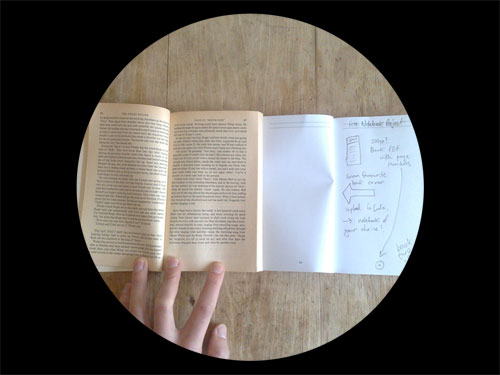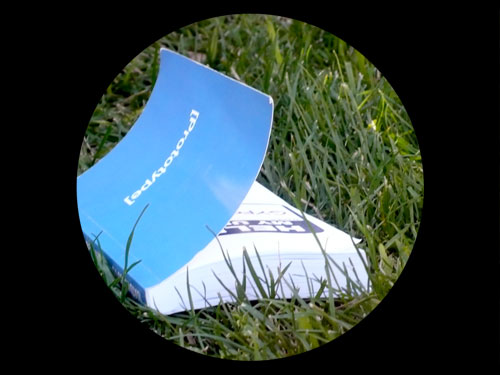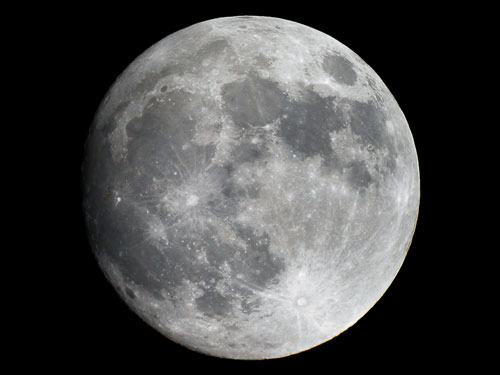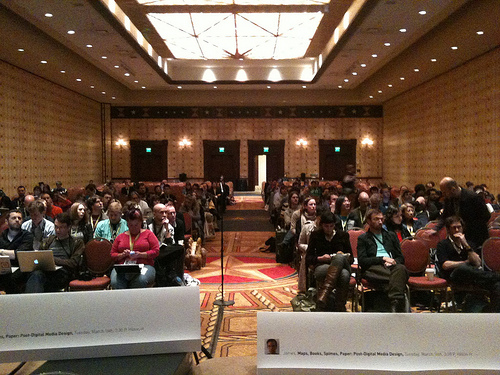Ten days ago, at South by South-West Interactive in Austin, Texas, I took part in a panel discussion entitled Maps, Books, Spimes, Paper: Post-Digital Media Design (#mbsp). It was good. One peculiarity of SXSW is that the panels are picked months in advance, long before the participants have come together to actually discuss what they’ll talk about, so there’s bound to be a little bending of the theme. Moreover, the panel is created out of those people coming together for the event: much of what I thought about and discussed came out of meeting and spending time with those people.
On the panel with me were Chris Heathcote, Michal Migurski, Ben Terret and our moderator Molly Wright Steenson. Chris has written up his introduction and Ben has written up Newspaper Club’s excellent contribution. I did “the books bit” and my notes are below.

I introduced myself as a traditional publisher who has spent some time experimenting with the form of the physical book. Projects like the DIY Classic Notebooks and the My Life In Tweets led to a few key realisations.
Lulu, and in fact any manufacturing process hooked up to the internet, has made the creation of physical things really rather simple. If you can think of it, you can probably get it made to your own designs in a way that used to be limited to specialised craftspeople – what I call the Internet as Cornucopia Machine. Real things in the real world have a different (different, not +ve or -ve) value to digital assets, and have a different capacity to surprise and delight. And physical instantiations of the digital can be both archives and souvenirs (you can’t really have digital souvenirs – a thought I’m going to unpack a bit more at a later date).
These experimentations with the form of the book led directly to the SXSW fieldnotes I made for myself and others attending the festival, and illustrate another couple of points.
 [Photo by Russell]
[Photo by Russell]
The fieldnotes are undoubtedly the most practical of these book-shaped objects that I’ve made so far. They are books for doing but they are also books for thinking. I made them to assist with two parallel tasks: the job of being-at-sxsw and the job of talking-at-sxsw. Producing them produced this talk.
Another thing that I need to go into at a later date is the way these physical objects degrade gracefully and show the signs of their use. I know there’s a lot of theory out there about making marks and leaving a trace and if anyone has any good pointers on some interesting places to start, do leave a comment. But I’ll just say one thing about that for now: books are souvenirs of themselves.

The big revelation with the fieldnotes, however, was time.
As I translated between these different formats – taking information from the web, structuring it and formatting it for print – I realised that what I was doing was wrangling this information not only into a different physical format, but a different temporal, or time-based, one.
These artefacts occupy not only space, but time. Different media occupy different times: the traditional newspaper lasts a day, and the internet is rapidly becoming the medium of “forever”. We used to think books were the forever medium, but the fieldnotes were designed expressly to last a week.
I used Mattins as an example of this too: a 5 minute podcast can be considered a different temporal format to a half-hour programme. And when you print out a Google Map you’re doing the same thing: turning a digital asset into a physical object to serve a brief purpose in time.
So how do we design and build things, physical or digital, that have a temporal format? In an (allegedly) information-rich, attention-poor cultural economy, how do we take account of and design for time?

The other major point I tried to make in my presentation was about change and turmoil in these media.
Paul Levinson wrote in The Soft Edge that “When a new medium triumphs over an older medium in a given function, that does not mean that the older medium will shrivel up and die. Rather, the old medium may be pushed into a niche in which it can perform better than the new medium and where it will therefore survive, albeit as something different from what it was before the new medium arrived. The key is whether the old medium is able to hit upon an already extant human need or perceptual mode.”
He’s talking about radio and television here, but the example I like better is painting. When Pisarro and Monet and Renoir and Cezanne saw photography coming along, they didn’t go “Well, bugger this then, I’ll go become a lawyer,” they came up with Impressionism which led onto Modernism and pretty much the entirety of 20th Century culture.
My point is that digital is not occluding and killing print, it is freeing up physical media to play a different role, to fulfill different needs and address different perceptual modes.

There followed a goodly discussion within the panel and with the audience, of which I can remember very little. There should be a podcast at some point, so I’ll link to that when it becomes available. The podcast is here (the scrum at the beginning is us throwing sweets to the audience). Two things I would like to say however.
One is to re-raise the question that I snuck in during a lull, and which I’d cut out from my original presentation as being off-topic. The “internet as forever medium” idea is just as flawed as any previous “forever medium”. For example, we lost a quantifiable percentage of all human knowledge in the repeated sackings and burnings of the Library of Alexandria between the first and the fifth centuries ACE. This will of course happen again, repeatedly.
With this in mind, I asked a couple of people how they thought the internet would end. Annalee Newitz, editor of io9, thought, characteristically, that it would be destroyed by a solar flare. And Russell Davies, equally characteristically, said that people would “probably just get bored with it”.
So the question is: what could we do with the internet when everyone gets bored of it? What perceptual need will it fill when we evolve another, higher forever medium? The answer(s) to that might be enlightening.
Secondly, at some point in the Q&A I made a statement about the costs of the physical book that was quite wrong. I said that the physical production of the book was only about 5% of its total cost when, as I should have known having made the point in this post some time ago, it’s more like 10%, with another 5% for the costs of physical distribution. A few people on Twitter rightly called me on this, but lots of people were asking questions and it’s quite scary having to think fast on a panel in front of a large audience, so there you go. I think my point still stands, which I think was something to do with ebook pricing.
Also: the value of a book is not entirely in the object, or in the time those who created spent with it, but in the time you spend with it. But that is another thought for another post. Thanks again to my co-panellists and to everyone who came. See you again soon, I hope.
[…] Maps, Books, Spimes, Paper: Post-Digital Media Design at SXSW | booktwo.org "…books are souvenirs of themselves." dingdingding. (tags: books paper jamesbridle materials souvenirs markmaking ) […]
Pingback by Infovore » Links for March 29th — March 29, 2010 @ 11:01 pm
“how they thought the internet would end.”
By drawing a search engine box at the top of the page and writing the word extase in the box for finding it in a Rimbaud poem.
http://www.la-grange.net/2010/01/28/rechercher-un-livre
Comment by Karl — March 30, 2010 @ 1:16 am
[…] from a SXSW panel called “Maps, Books, Spimes, Paper: Post-Digital Media Design“: As I translated between these different formats – taking information from the web, […]
Pingback by Weekend reading - ProfHacker.com — April 2, 2010 @ 11:01 pm